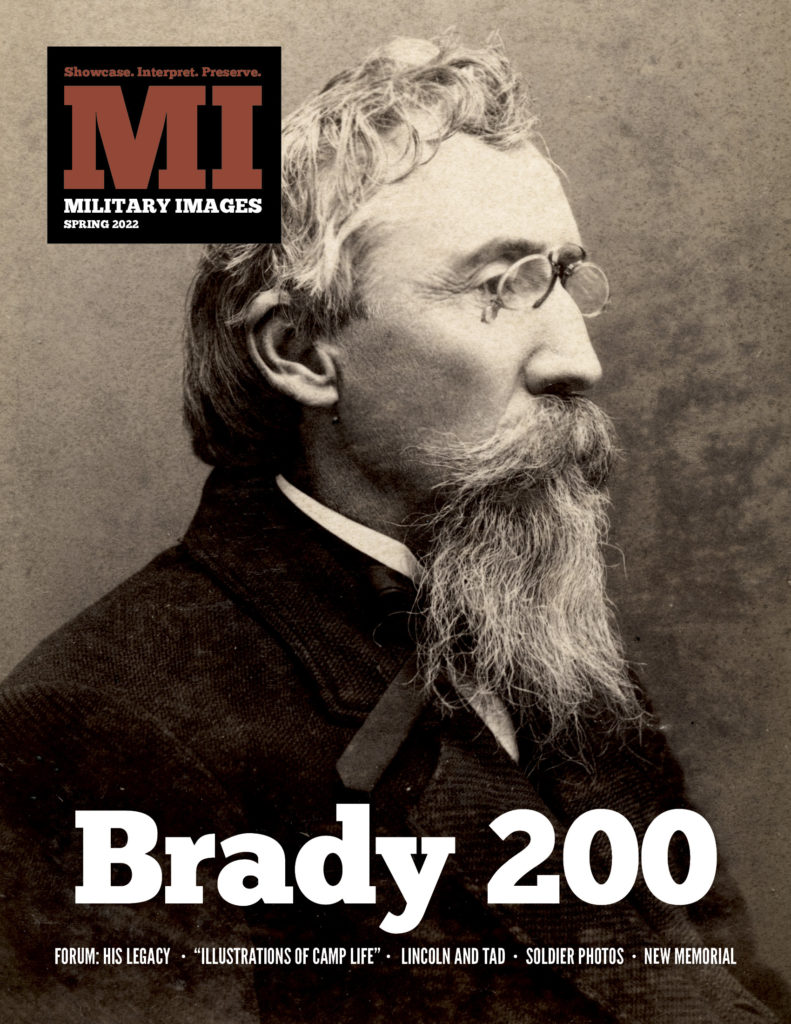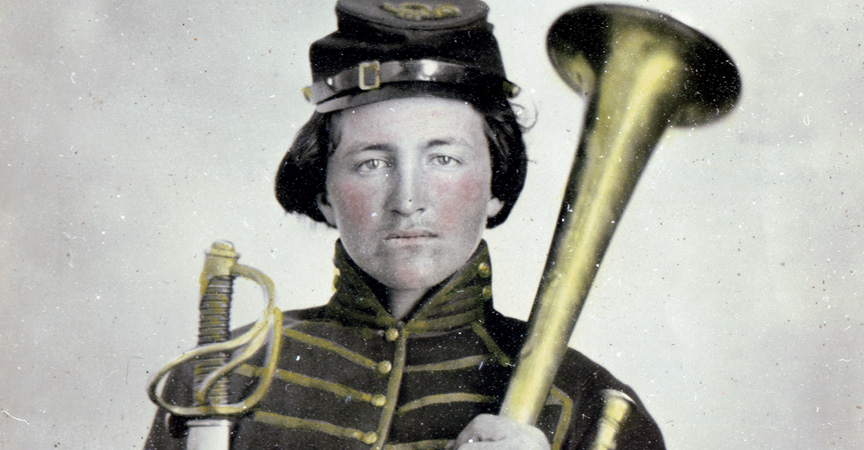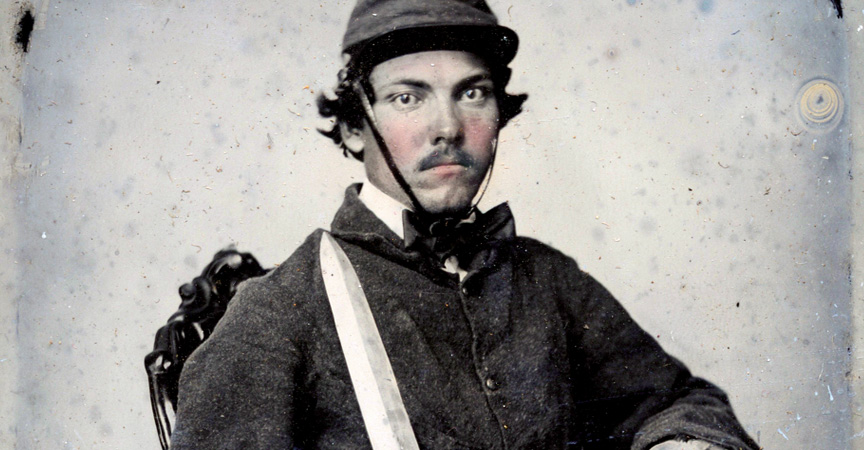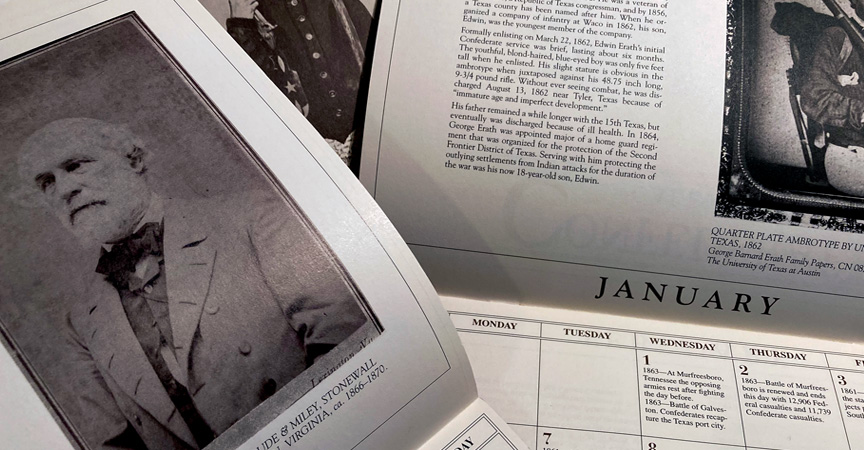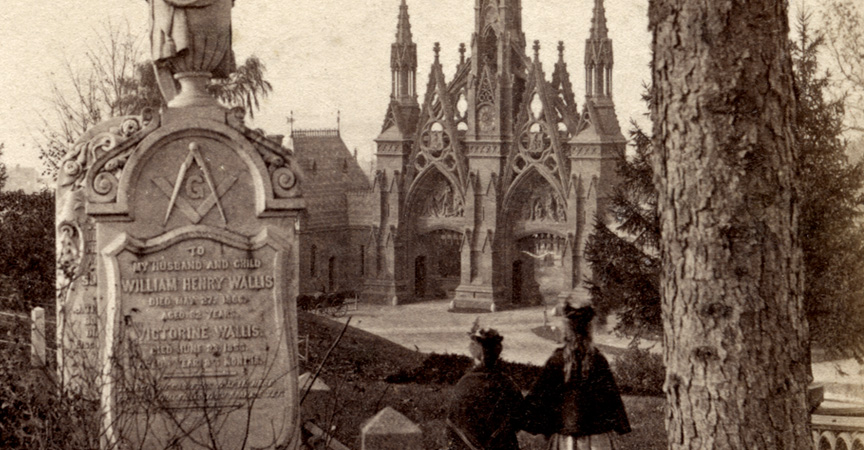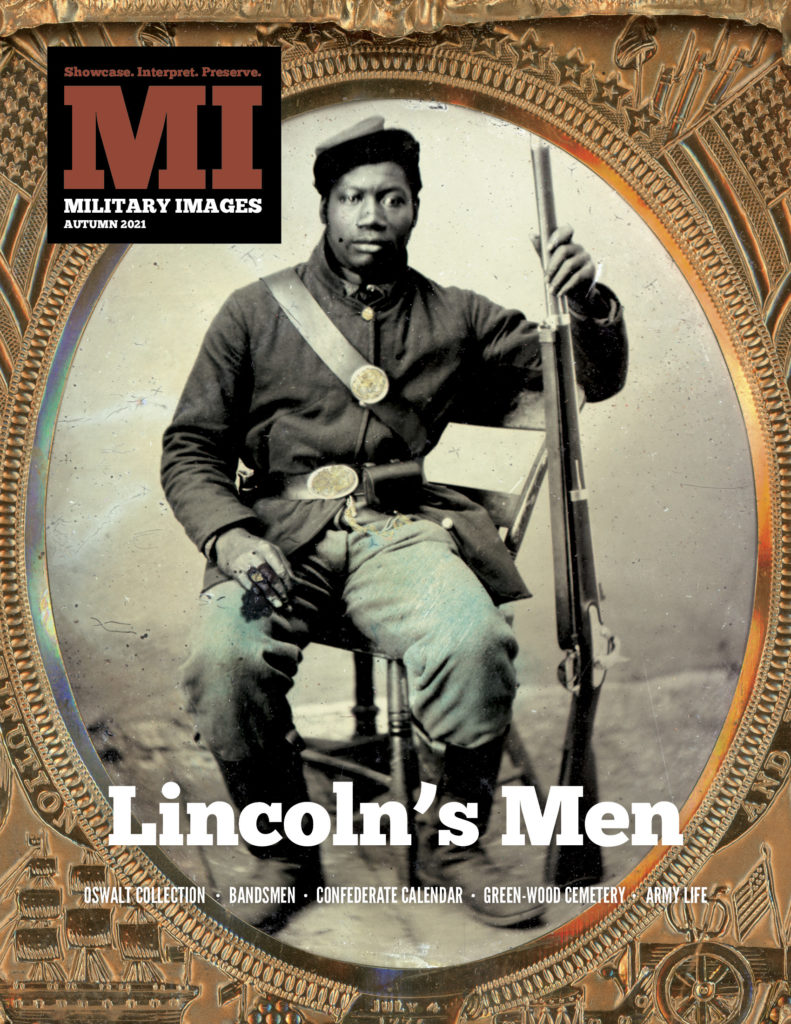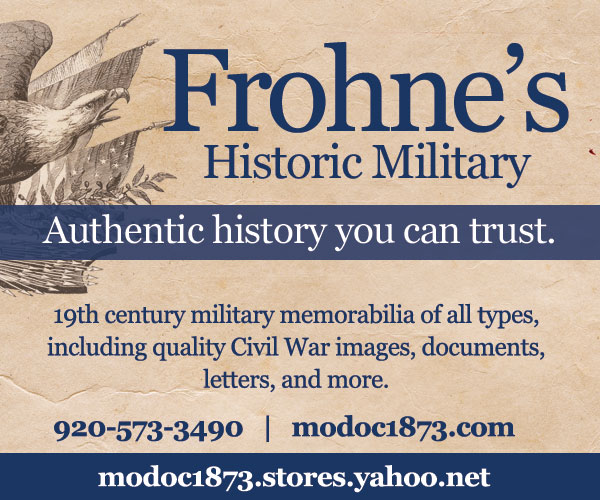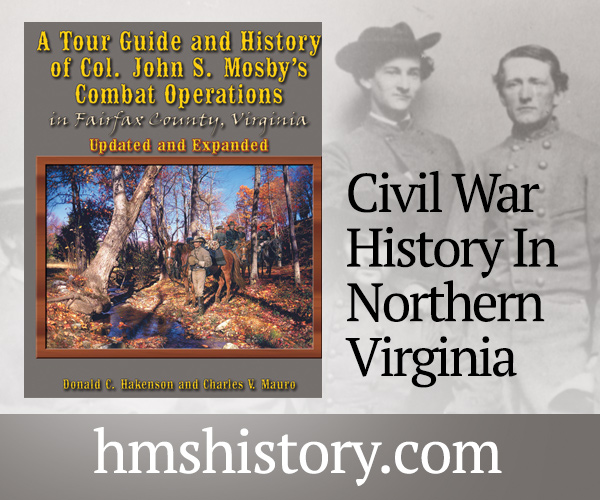A complete table of contents for the Spring 2022 issue of Military Images magazine, and information about how to purchase single issues and subscriptions.
Vol. XL, No. 2
(80 pages)
Print edition: Visit our store to check availability
Digital edition: Visit JSTOR.org to purchase
Subscribe to MI
Explore the MI Archives:
Browse | Advanced search | Tutorial
Inside
Cover image
A postwar cabinet photograph from the Doug York Collection pictures photographer Mathew B. Brady.
Table of Contents (p. 1)
Editor’s Desk (p. 2)
In “Military Images and Gettysburg Publishing Tag Team a New Book,” the editor announces Gettysburg Faces: Portraits and Personal Accounts.
Mail Call (pp. 3-4)
Feedback includes requests for help finding images of the Richmond City Battalion, and for guidance on scanning cartes de visite.
Military Anthropologist (p. 4)
A survey of 867 cartes de visite reveals four ways photographers canceled revenue stamps affixed to images from 1864-1866.
Passing in Review (p. 6)
Book reviews: An Aide to Custer: The Civil War Letters of Lt. Edward G. Granger and Crosshairs on the Capital: Jubal Early’s Raid on Washington, D.C.
Photo Sleuth by Kurt Luther (pp. 8-10)
In “Making Civil War Photo Sleuth Identifications More Trustworthy,” Luther discusses DoubleCheck, a new verification feature.
Antebellum Warriors (p. 12)
Ambrotypes and albumens from the Paul Russinoff Collection feature West Pointer Henry Augustus Frederick Worth, 6th U.S. Infantry, and his wife, Mary.
Most Hallowed Ground (p. 14)
Ezra Westcote Clark, Jr., an officer in the 34th Ohio Infantry and staffer to Maj. Gen. Winfield Scott Hancock, went on to federal civil service in Alaska.
The Honored Few (p. 16)
Charles Amory Clark, 6th Maine Infantry, received the Medal of Honor for leading his command to safety at Brooks’ Ford during the Chancellorsville Campaign.
The Citizenry (p. 18)
Sarah Humphrey Bustill was connected to the Underground Railroad through her family, and to African American pioneer daguerreian Glenalvin Goodridge.
Fakes, Forgeries and Frauds by Perry M. Frohne (pp. 20-21)
Frohne’s “Fake Radar Contest” is a chance to test your knowledge of fake cartes de visite—and win a prize!
Brady 200: A forum (pp. 23-36)
To commemorate the bicentennial of Brady’s birth, we invited nine influential individuals—curators, collectors, and historians—to reflect on his relevance.
“Illustrations of Camp Life”: Thoughts on Mathew Brady’s overlooked early war series by Jeff L. Rosenheim (pp. 37-44)
Mathew Brady and his team of photographers produced an informal collection of outdoor portraits taken in and about the Defenses of Washington.
A Grand Gathering of Soldier Faces (pp. 46-51)
A survey of studio portraits of soldiers taken in the New York City and Washington, D.C., galleries of Mathew Brady.
Lincoln and Tad: A survey of images connected to Anthony Berger’s intimate portrait of a beleaguered wartime leader and his son by Chris Nelson (pp. 52-55)
A portrait of President Abraham Lincoln and his son Tad, taken on Feb. 9, 1864, became a staple in photo albums across the Union.
“The Camera Is the Eye of History”: A new memorial in Washington, D.C., honors Mathew Brady by Ronald S. Coddington (pp. 56-58)
Collector Larry West is spearheading a new memorial to honor Mathew Brady at Historic Congressional Cemetery in Washington, D.C.
“Living Shadows of the Passing Time”: Pioneer Arkansas photographer Thomas W. Bankes, his iconic image of the Sultana, and more by Gene Eric Salecker (pp. 60-65)
The story of Thomas W. Bankes, whose photo of the Sultana taken before it sunk with the loss of 1,200 lives ranks among the nation’s most memorable images.
A Collecting and Publishing Journey from the Civil War Centennial to Today—and the Future: Q&A with Ross J. Kelbaugh (pp. 66-69)
Ross Kelbaugh came of age in the 1950s when commemorations of the Civil War permeated popular culture—and launched him on an exciting journey of discovery.
Material Culture: Uniforms, equipment, weapons and related objects by Frederick C. Gaede (pp. 70-74)
Ponchos and waterproof blankets composed of rubber became the personal protection choice of many Union soldiers during the Civil War. Here’s the backstory.
Behind the Backdrop: Origins, artistry and photographers by Adam Ochs Fleischer (pp. 75-76)
In “Reflections on Two Years,” Fleischer looks back at previous columns and previews future plans.
Stragglers: Distinctive Images from MI contributors (p. 78)
Featured are two cavalry troopers who may have hailed from Texas or Mississippi.
The Last Shot (p. 80)
Saddler George H. McCoon of the 3rd Wisconsin Cavalry sits astride his horse at Carroll Plaza, once the parade ground of the original Fort Scott, Kan.
